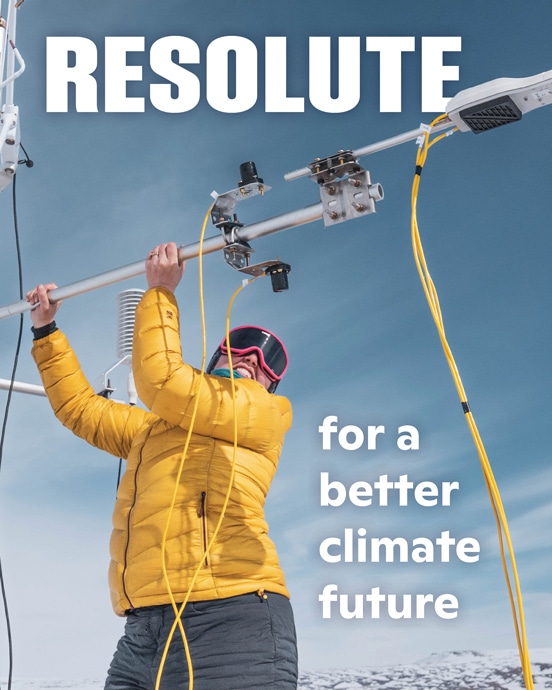Study pinpoints links between melting Arctic ice and summertime extreme weather in Europe
New research shows how last year’s warming melted ice in Greenland that increased flows of fresh, cold water into the North Atlantic, upsetting ocean currents in ways that lead to atmospheric changes.
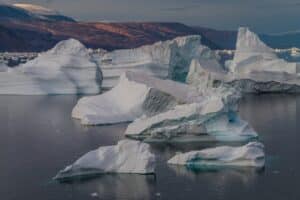
The Arctic Ocean is mostly enclosed by the coldest parts of the Northern Hemisphere’s continents, ringed in by Siberia, Alaska and the Canadian Arctic, with only a small opening to the Pacific through the Bering Strait, and some narrow channels through the labyrinth of Canada’s Arctic archipelago.
But east of Greenland, there’s a stretch of open water about 1,300 miles across where the Arctic can pour its icy heart out to the North Atlantic. Those flows include increasing surges of cold and fresh water from melted ice, and a new study in the journal Weather and Climate Dynamics shows how those pulses can set off a chain reaction from the ocean to the atmosphere that ends up causing summer heatwaves and droughts in Europe.
Read more on Inside Climate News.
How poop turns into forests
Did you know the world’s largest tropical forest is partly formed by seeds emerging from poop? Ecologist Ludmila Rattis reveals the surprisingly fruitful benefits of letting nature take care of its own business, sharing how the digestive habits of tapirs — pig-like creatures that roam Amazonia — spread seeds that help regenerate the forest and promote climate resilience worldwide. (Even nature’s waste is put to good use!)
Freeze on Russian collaboration disrupts urgently needed permafrost data flow
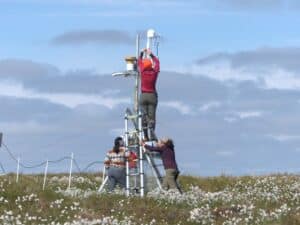
Warming temperatures in the Arctic are accelerating the thaw of carbon-rich permafrost and threatening to add massive amounts of carbon dioxide and methane to an atmosphere already overheating from the buildup of anthropogenic greenhouse gas emissions.
More than half that permafrost lies beneath remote Russian soil, where scientists have long worked in an international research community that freely shared its field stations, climate sensors and data sets to better understand the rapidly changing polar region’s planetary impacts.
Researchers are especially eager to know when a dangerous tipping point may be reached that would trigger the release of vast amounts of greenhouse gases stored in frozen soils.
But then came the Russian invasion of Ukraine on Feb. 24, 2022, and all that cooperation came to a halt, part of the fallout of Western sanctions on Russia. Since then, international researchers outside Russia have applied creative workarounds in order to continue their research, but problems remain.
How much carbon can farmers store in their soil? Nobody’s sure.
Advocates say the long-awaited farm bill could help fix that.
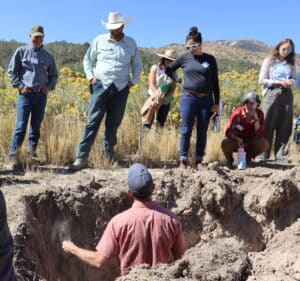
Dirt, it turns out, isn’t just worm poop. It’s also a humongous receptacle of carbon, some 2.5 trillion tons of it — three times more than all the carbon in the atmosphere.
That’s why if you ask a climate wonk about the U.S. farm bill — the broad, trillion-dollar spending package Congress is supposed to pass this year (after failing to do so last year) — they’ll probably tell you something about the stuff beneath your feet. The bill to fund agricultural and food programs could put a dent in the country’s greenhouse gas emissions, some environmental advocates say, if it does one thing in particular: Help farmers store carbon in their soil.
The problem is, no one really knows how much carbon farmers can store in their soil.
What in the world is weather whiplash?
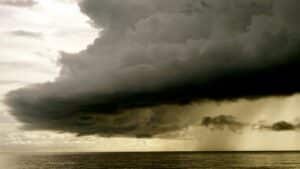
Temperatures across the United States this winter have been on a roller coaster.
Average December temperatures in Minnesota, for example, were 14 degrees Fahrenheit warmer than usual, but the following month, they plummeted below the 30-year average before swinging back up to break an all-time high on January 31, hitting a balmy 55 degrees—nine degrees above the previous daily record. Parts of Montana saw a 90 to 100-degree temperature swing in the span of a month.
Continue reading on Bulletin of the Atomic Scientists.
Woods Hole scientists named to state, federal climate advisories

Two Woods Hole scientists have been appointed to state and federal climate advisories. These advisories will begin meeting in February to provide science-based guidance to government decision-makers.
In December, Falmouth resident and Arctic ecologist Susan M. Natali was appointed to the new federal Advisory Council for Climate Adaptation Science by Secretary of the Interior Debra A. Haaland. Dr. Natali works at the Woodwell Climate Research Center, where she leads a project called Permafrost Pathways that addresses the impacts of permafrost thaw in the Arctic.
Sarah B. Das is a glaciologist and climate scientist at the Woods Hole Oceanographic Institution, where she has worked for over 20 years. She studies polar ice sheets in Greenland and Antarctica, which have been rapidly melting over the last several years. In January, Dr. Das was appointed to the Massachusetts Office of Climate Science’s new Climate Science Advisory Panel.
Why have our winters gotten so weird?
Yes, it’s freezing now. But winters are actually warming dangerously fast.

Bitter cold continues to grip the United States as unusual freezing temperatures stretch as far south as Florida this week. Even more chilly weather is in store through the weekend, putting more than 80 percent of the US population under some type of cold weather advisory.
But this jarring cold snap is sandwiched between the end of what was the hottest year on record and the start of another year that could be even hotter. And even as temperatures plunge to new depths, the recent weather isn’t remotely enough to derail an ominous trend.
As the climate changes, the bottom of the temperature scale is rising faster than the top. This pronounced winter warming is often less palpable than the triple-digit summer heat waves that have become all the more frequent across much of the country, but no less profound.
Winter storm barrage likely to continue

Climatologists say the prevalence of strong southerly storms that have battered the Vineyard’s south shore this winter are due, in part, to the first El Niño winter in five years. Strengthened by rising and warming waters, Islanders should also expect more of these kinds of storms this season and into the future, according to experts.
Though the Vineyard and the rest of New England typically sees northeasters in the colder months, three storms have come up from the south and pass to the Island’s west, causing severe erosion at several of the Vineyard’s prized beaches.
Read more on The Vineyard Gazette.




